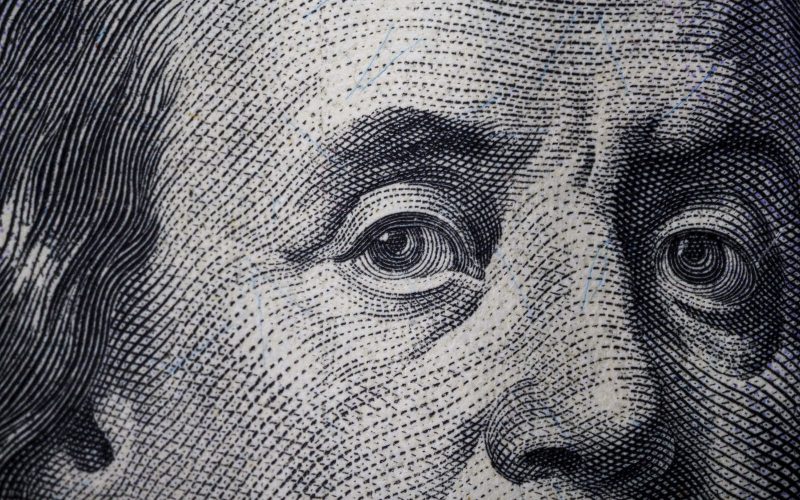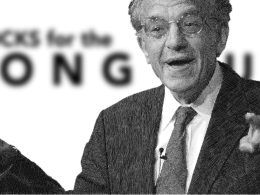by Hubert Marleau, Market Economist, Palos Management
July 25, 2025
Hard-rock Republicans are intensifying pressure in a distasteful spectacle on Jerome Powell, Chair of the Federal Reserve, to leave Washington for good. The White House wants a review of the decision to renovate the Fed building, and a congresswoman said the Justice Department should investigate if Powell lied to Congress, immediately pushing the CBOE Skew Index, a reliable gauge of tail risk, higher. In order to avoid more theatrics and unnecessary market turmoil, Powell, at a conference on bank regulation, correctly avoided making any public exculpatory remarks to clear himself from charges of fault or guilt and calmly dodged comments on interest rates.
Indeed, too much attention has been spent on the theatrics of whether Powell will be fired as Chair of the Federal Reserve, overlooking the deeper truth: that regardless of what may happen to him, the reality is that a fundamental overhaul is coming to the world’s most important central bank that its way beyond mere interest rate settings and building renovations.
Trump might think he’s a chump, but he is not. In the real world, he relies on his 12-man board, his staff of trained experts, and opinions that have theoretical validity and empirical evidence, based on probable scenarios. The irony is that the Powell-led Fed has done a pretty good job, navigating immaculate disinflation: the Fed’s policy rate is only 0.375% above the neutral rate of 4.00%, being the 5-year Treasury yield, equal to the run rate of the economy and tight enough to anchor inflation below 3.0%. And yes, the Chicago Fed’s national index of broad financial conditions has fallen to its lowest level in more than 3 years, suggesting financing in the economy is more than ample.
Moreover, the Fed’s monetary stance has kept the annual growth rate of money around 4.5%, obeying a 2-plus-2 economy - that is 2% for growth and 2% for inflation, with a bit for liquidity. However, while it is true that interest rates are determined by the Fed’s policy rate, not so when it comes to bond yields, which reflect underlying fundamentals like inflation expectations, economic growth and government borrowing needs, all of which are captured in the N-GDP.
Thus the objective is about imposing a policy mix called “Fiscal Dominance,” a sort of a watershed moment that would subordinate the Federal Reserve to the priorities of the US Treasury and political aims. The thing is that the fiscal arithmetic is sufficiently dire, the political environment sufficiently febrile, the strong productivity sufficiently broad, and the promise of AI exceptionalism sufficiently credible for an era of fiscal dominance to become an existential threat to the Fed’s independence.
Kevin Warsh, a former Fed governor and Treasury Secretary Scott Bessent, two leading contenders to take over Powell's job, are saying that there must be close cooperation between the Fed and the Treasury. Howard Lutnick, Secretary of the Commerce Department, and Mike Johnson, House Speaker, are also supporters of the idea, which Kevin Warsh laid out t in a CNBC interview, essentially stating: “We need a new Treasury-Fed Accord, like we did in 1951 after another period where we built up our nation’s debt and we were stuck with a central bank that was working at cross-purposes with the Treasury. That’s the state of things now. So if we have a new accord, then the Fed chair and the Treasury secretary can describe the markets plainly and with deliberation. This is our objective for the size of the Fed’s balance sheet.”
Meanwhile, Scott Bessent said on CNBC: “What we need to do is examine the entire Federal Reserve institution and whether they have been successful because its autonomy is threatened by persistent mandate creep into areas beyond its core mission, provoking justifiable criticism that unnecessarily casts a cloud over the Fed’s valuable independence on monetary policy, wondering what the Fed’s legions of Ph.D economists are doing.’ As a result, there is serious talk in Washington to install Scott Bessent as Treasury secretary and Fed Chair, either at the same time or as a board member - a return to the original system where the Treasury had a seat on the board of the central bank.
Howard Lutnick, in an interview with Sean Hannity on Fox News, called out for Jerome Powell to be removed, by hook or by crook. He said: “This guy's gotta go. He should be replaced, we need lower interest rates:” while Mike Johnson became the latest member of Trump's inner circle to assail Jerome Powell, thinking that all scrutiny is appropriate in support of modifying the laws which delineate the Fed’s purpose and role in the US economy.
While I believe the market would not refuse the inclusion of non-elite school economists to join the Fed’s staff and experienced business CEOs to sit on the Fed’s board, I’m certain that they would not favour a Fed that would become the piggy bank for the Treasury system. On the contrary, the Fed should be fenced in from political winds. Decades of research has proven that market economies need independent central banks to counterbalance inflationary pressure, often emanating from the ambitious goals of governments. Put simply, conservative monetary theory dictates that within the broad guardrails of price stability and maximum employment given by the government, central banks should be given substantial freedom to control the variability and expectation of inflation.
What Took Place in the Week ended July 25?
On Monday, the S&P 500 increased 0.14%, enough to notch a new all-time high of 6306, making it the 14th record close this year. Another remarkable feat was the 61st trading session, during which the Nasdaq-100 finished above its 20-day moving average - the record being 77 straight sessions, which ended on February 5, 1999. What is intriguing here was the message from the Conference Board that the economy is set to slow, its Leading Economic Indicator (LEI) having declined 0.3% to 98.8 in June, a stronger fall than had been expected.
If it had not been for the stock market rally, it would have been far worse. Consumer expectations were low, manufacturing orders were weak, and unemployment claims rose, while the LEI has fallen by 2.8% over the past six months, a faster pace than the 1.3% contraction recorded in the second half of 2014. The bond market agreed with this conjecture, as real bond yields, adjusted for inflation expectations, were 15 bps lower than they were a week earlier.
On Tuesday, the S&P 500 barely budged, rising only 0.1% to 6309, but nonetheless closed again at a new all-time high. Investors should note that below the surface, the small-cap and cyclical stocks have quietly staged a breakout in July, which apparently stems from capital expenditures promised by foreign entities. The 50-day moving average of the Russell Index is trading above its 200-day average, forming a "golden cross," which is potentially a bullish trend.
On Wednesday, global markets surged after Japan and the U.S. struck a deal, and we’re buoyed further during the day by hopes of a trade agreement with the EU. According to Goldman Sachs, the new 15% baseline tariff for most imports coming from allies will be 15%. The appearance of tariff relief caused the S&P 500 to advance 0.8% to close at 6359.
On Thursday, amid solid demand for AI, favourable signs of job strength ahead and encouraging activity in the service sector of the economy, the S&P 500 eked out a 0.1% gain to close at 6363, marking its fourth straight record high. There were reports from JPMorgan and The Ambrus Group that bearish investors and volatility traders were respectively throwing in the towel. Capitulation seems to be broadly based as sentiment gauges published by the CBOE and the CNN show that market participants are fearless and greedy.
On Friday, the S&P notched another puzzling and unexplainable gain of 0.5%, closing at 6394 via a no-fifth straight finish, perhaps a short squeeze.
The Near-Term Stock Market Outlook
Last week, I wrote: “While the aforementioned technical analysis has made me confident that my 6600 S&P 500 target will be attained before the year ends, a July Wall Street survey of professional forecasters gave me additional courageous assurance. On average, they expect real GDP to grow continuously over the next 12 months, with a lower chance of a recession (33%) than at previous odds of 45%, the point being that, except in the housing sector, the economy is doing just fine, as illustrated by solid Q2 bank earnings and good employment numbers. In fact, the Atlanta Fed’s GDPNow estimate for Q2 real GDP is 2.4%. Moreover, productivity is on a steep upswing, which in turn is protecting high corporate profit margins. Indeed since the advent of big data, AI and automation, S&P 500 companies' revenue per worker expressed in 1986 dollars has risen 15% in the last 3 years from $18.25 to $21.00, according to the BofA.”
Indeed, the Trump trades have performed well, getting wins on all fronts. In the 6 months ended July 21, the S&P 500 scored a 4.7% gain, bitcoin rose 6.2%, the dollar index fell 7.6%, oil prices decreased 11.3 % and 10-year bond yields declined 20 bps. Some say that investors may be getting tired of charging ahead, in need of a rest. So far the earnings season shows that AI spending is boosting the profit of software and semiconductor businesses while traditional businesses are struggling with Trump’s trade policies. Maybe so, but I would not dispense with value stocks because the second-quarter growth estimate is still 2.4% and they are relatively very cheap and they have not been in a bull trend in more than 2 decades. Why? Since July 7, the skew index, an excellent measure of potential tail risk in the financial markets, has increased from an elevated level of 137.96 to even more elevated level 159.41, which stemmed from the growth sector of the market and from another meme-stock frenzy.
Copyright © Palos Management














